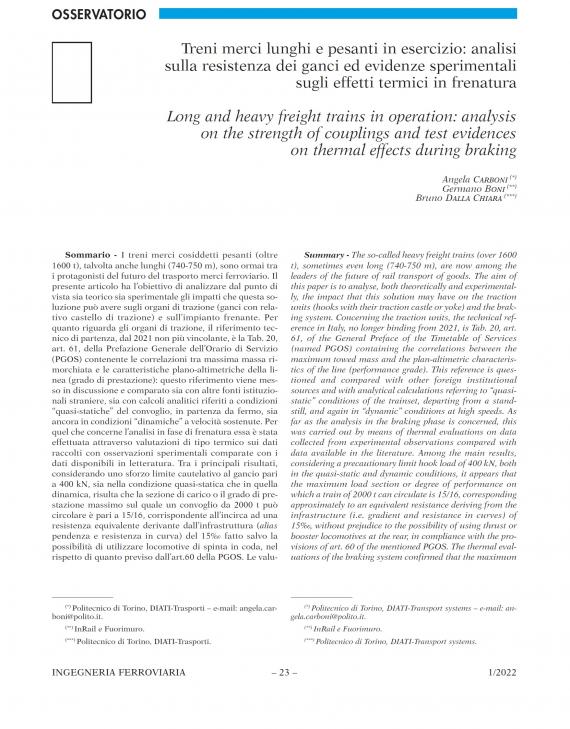
Summary - The so-called heavy freight trains (over 1600 t), sometimes even long (740-750 m), are now among the leaders of the future of rail transport of goods. The aim of this paper is to analyse, both theoretically and experimentally, the impact that this solution may have on the traction units (hooks with their traction castle or yoke) and the braking system. Concerning the traction units, the technical referencein Italy, no longer binding from 2021, is Tab. 20, art. 61, of the General Preface of the Timetable of Services (named PGOS) containing the correlations between the maximum towed mass and the plan-altimetric characteristics of the line (performance grade). This reference is questioned and compared with other foreign institutional sources and with analytical calculations referring to “quasistatic” conditions of the trainset, departing from a standstill, and again in “dynamic” conditions at high speeds. As far as the analysis in the braking phase is concerned, this was carried out by means of thermal evaluations on data collected from experimental observations compared with data available in the literature. Among the main results, considering a precautionary limit hook load of 400 kN, both in the quasi-static and dynamic conditions, it appears that the maximum load section or degree of performance on which a train of 2000 t can circulate is 15/16, corresponding approximately to an equivalent resistance deriving from the infrastructure (i.e. gradient and resistance in curves) of 15‰, without prejudice to the possibility of using thrust or booster locomotives at the rear, in compliance with the provisions of art. 60 of the mentioned PGOS. The thermal evaluations of the braking system confirmed that the maximum values reached are compatible with those in the literature and that the behaviour of the braking blocks is different according to their type.
- Gennaio


